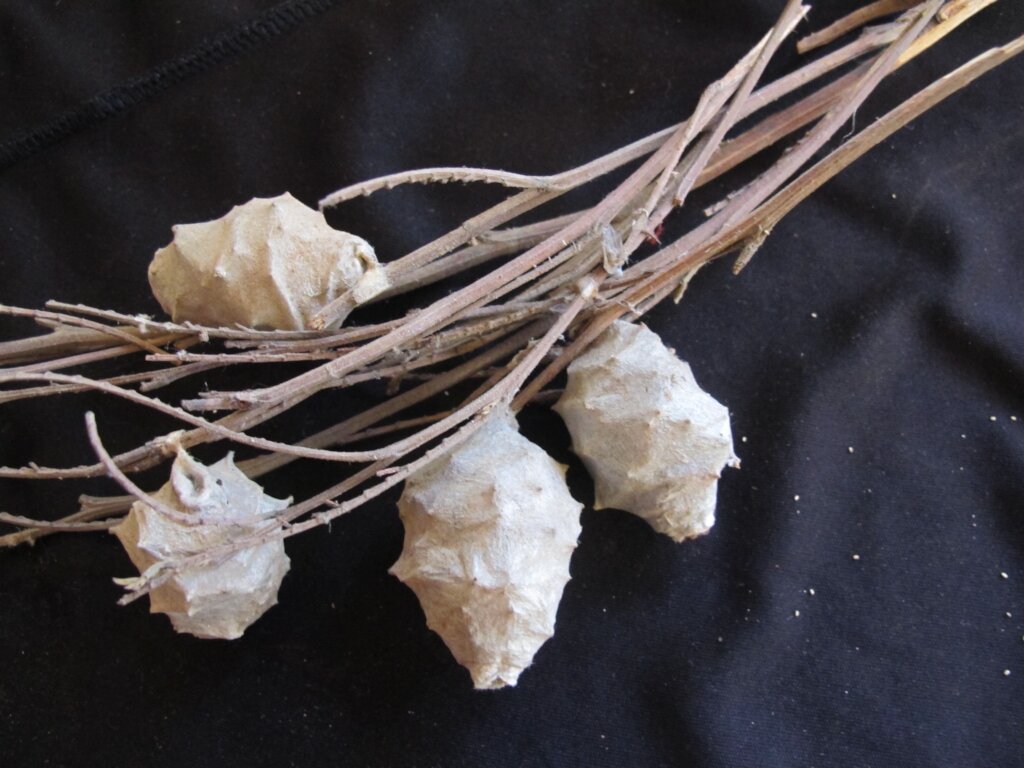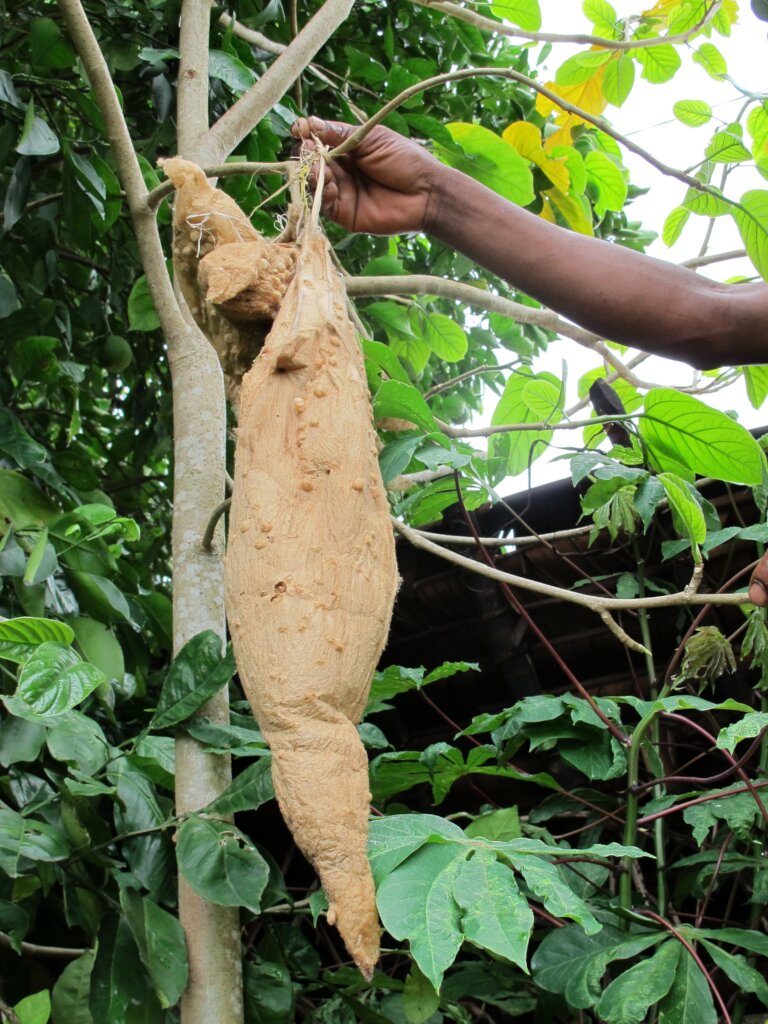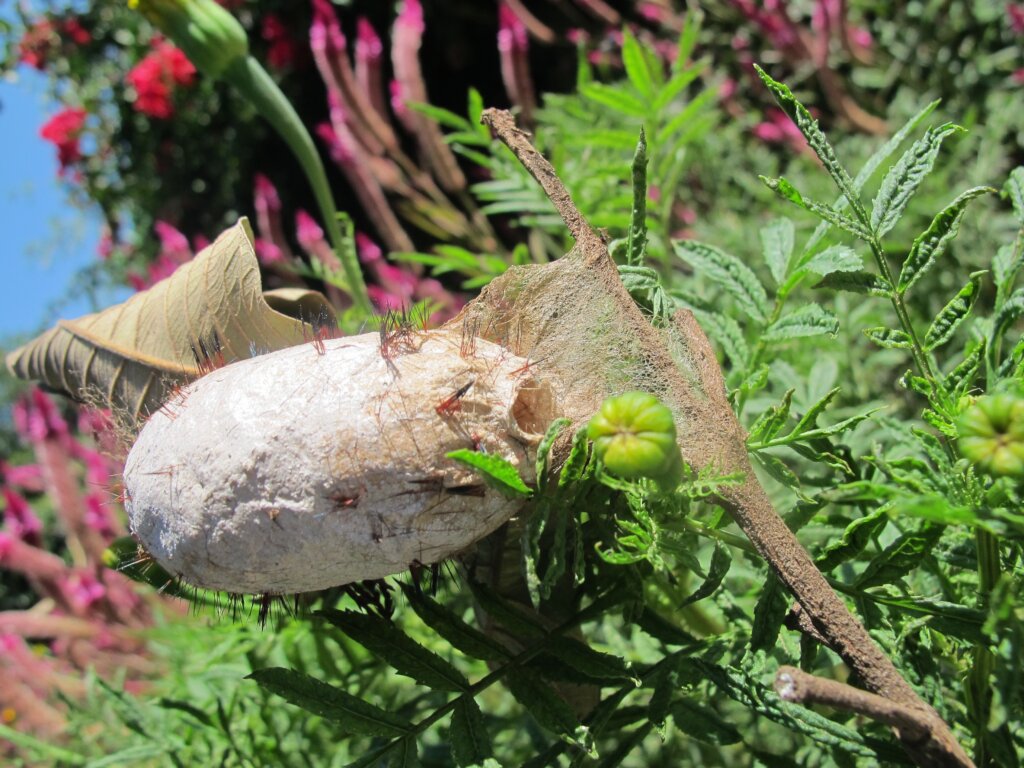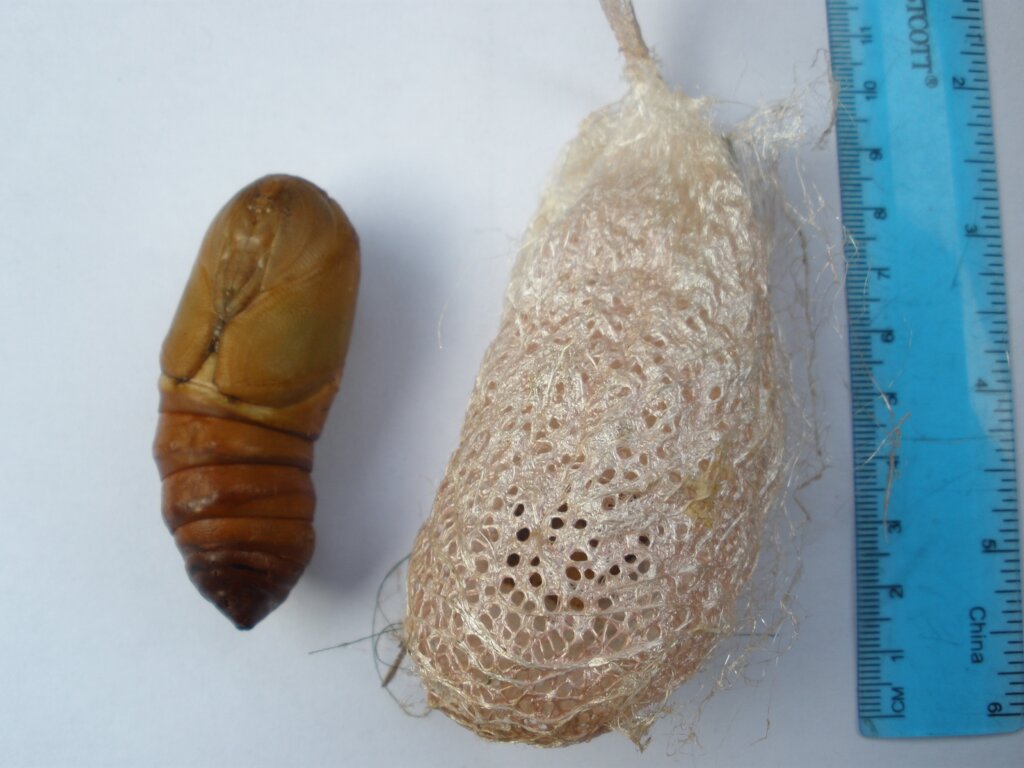By Mamy Ratsimbazafy | Project leader
GLOBAL GIVING REPORT : Rearing silk moth to restore the forest.
(December 2023)
- Acknowledgement:
On behalf of the Sepali Madagascar team members, I acknowledge all the donors that have contributed to support us during this year (2023). Due to your kindly supports, Sepali Madagascar is moving on to consider the other wild silk species that we discovered a couple years ago. As usual, the processing of each wild silk species must involve a couple farmers that can benefit directly or indirectly from selling the raw cocoons to the Sepali Madagascar.
Since 2007 to 2023, Sepali Madagascar team has identified seven species of wild silk. Only two species has been exploited so far, so this year Sepali Madagascar has decided to add more silk species into our processing program to increase the number of farmers that can get an alternative revenue from selling the wild silk to Sepali Madagascar.
Therefore, Sepali Madagascar has decided to establish the collaboration with our farmers to plant the host plant trees and then produce the new species of silk cocoons that we will purchase and then process into finished products.
I would notice that the rearing of each silk worms must leads to the host plant trees plantation. Thus leads to reforestation of the damaged areas around the northern tropical rainforest of Madagascar.
Again, thank you so much for supporting us, the Sepali Madagascar team members are proud as well as optimistic to make a positive change regarding reforestation around the Makira protected area.
Sincerely
Mamy Ratsimbazafy
Sepali Madagascar project Director.
- The different species of wild silk that Sepali Madagascar that have been processed:
1- The Deborrea malagassa:
Deborrea malagassa is an endemic silkworm species that has never exploited in Madagascar. Its cocoon is so unique because of the mixture of silk and stick. This species has one generation per year and the harvesting period is in June.
The Deborrea larvae feed on Mimosae tree species that is also endemic to Madagascar. Usually, the Mimosae tree is harvested by the villagers for roof-house construction due to its flexibility and durability.
The effort of Sepali Madagascar to produce Deborrea cocoons by the local villagers will promote the Mimosae tree plantation.
Sepali Madagascar plans to produce 15 kilos of Deborrea malagassa cocoons in 2024 as a startup production and then increase the production progressively by involving new farmers into the program.
Picture 1: Deborrea malagassa cocoon
2- The Deborrea sp:
During our inventory study in 2014, Sepali Madagascar team has discovered a second species of Deborrea that we are still identifying the species name.
This species is endemic to Madagascar and has only one generation per year. The harvesting period is in June. The cocoon’s morphology consists of dry leaves covered by a thin layer of silk that Sepali team process into non-spun textile.
This species feed on an endemic rain forest tree Terminalia sp, Family of COMBRETACEAE.
Since 2016, about 5 families have been working with Sepali to produce 10 kilos of Deborrea sp cocoon every year.
Picture2: Deborrea sp cocoon
3- Hypsoides singularis:
Hypsoides singularis is a colonial species endemic to the Northern tropical forest of Madagascar. The larvae feed on the Lombiry trees that is classified among the endangered species. Thousand larvae feed on the Lombiry leaves and then spin one common cocoon. This species has one generation per year and the harvesting period is in September.
The Hypsoides cocoon can be spin into yarn and then weave manually.
The main jobs to rear this species is just to plant the host plant trees. When the tree grows enough, the female moths lay eggs on the leaves. The larvae spin cocoon after one year without moving from the same host plant tree.
In the future, Sepali Madagascar is thinking to process the hypsoides cocoon into yarn that can be used to saw our textile.
Picture3: Hypsoides singulars cocoon
4- Borocera sp:
Borocera is the only endemic silk of Madagascar that have been exploited by the Malagasy so far. The villagers in the high-land as well as in the Southern Madagascar have processed this species for several generations to make scarfs and burial shrouds.
Maroantsetra region, in the Northern Madagascar where Sepali Madagascar works is home to several varieties of Borocera. This species feed on the Hintsya biguga trees that is among the IUCN red list as endangered species.
The host plant tree is endemic to the Northern rainforest of Madagascar and it is included into the species list of the reforestation program implemented by the Malagasy government.
The processing of the Borocera sp silk by Sepali Madagascar will increase the interest of farmers to plant more Hintsyatrees on their land.
This silk moth species has 6 generations a year and the rearing technic does not requests any money spending such us rearing materials…
Sepali is working with 20 farmers to produce the Borocera silk.
Picture4: Maroantsetra Borocera cocoon
5- Antherina Suraka:
Antherina Suraka was the first species of silk moth discovered by Sepali Madagascar team in the Northern Madagascar (2007). Since 2009, we have spread awareness about the production of the suraka cocoons. The Suraka larvae feed on the Talandoa trees ( Polyscias bakeriana) and consists of 9 generations a year.
So far, 360 farmers have participated in the Suraka production program and more than 45000 host plant trees were planted on the farmer’s land that have covered 45 hectares of land.
Recently, one of our best farmers has noticed that the host plant tree of Suraka fertilizes the soils, in addition to that this tree can be used as vanilla support tree. Consequently, many farmers intercropped this tree species into their Vanilla farms.
So the Suraka program allows farmers to benefit from both vanilla and Suraka cocoon harvesting.
Picture5: Antherina Suraka cocoon
6- Argema mittrei:
Argema mettrei, commonly called “the Madagascar comet moth” is an emblematic moth species of Madagascar. This is the largest size of the Madagascar moths.
Since 2016, Sepali is working with 5 farmers to produce the Argema cocoons. This species has 2 generations a year and the cocoon harvesting period is in June and November.
The Argema larvae feed on the multiple endemic forest trees such us Weinmannia, Eugenia.
The Sepali Madagascar farmers produce about 18000 Argema cocoons per year which are enough to complete our current marketing orders.
Picture6: Argema mittrei cocoon
7- Ceranchia Apollina:
Ceranchia appolina is endemic to the northern Madagascar. Its host plant is a forest vine called Plactaneia. This species produces seeds that the birds eat and spread everywhere.
Ceranchia is the species that Sepali mostly processed into finished products. Therefore, Sepali Madagascar processes averagely 100 kilos of Ceranchia cocoon every year.
Twenty farmers are working with us to produce the cocoons.
Picture7: Ceranchia cocoon
Summary:
Sepali Madagascar is struggling to use different type of wild silk into our processing methods. It is so important to notice that each species of silk cocoons has farmers that insure the larvae rearing as well as women artisan groups that insure the processing.
Finding a markets of the products made up with the Madagascar wild silk is very crucial to implement both of conservation of the wild silk moth species as well as forest restoration.
Links:
Project reports on GlobalGiving are posted directly to globalgiving.org by Project Leaders as they are completed, generally every 3-4 months. To protect the integrity of these documents, GlobalGiving does not alter them; therefore you may find some language or formatting issues.
If you donate to this project or have donated to this project, you can recieve an email when this project posts a report. You can also subscribe for reports without donating.
Support this important cause by creating a personalized fundraising page.
Start a Fundraiser


